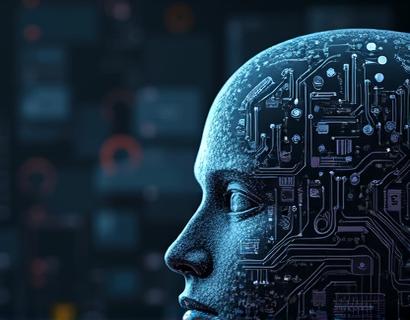UX Design Trends 2025: Mastering Digital Transformation with Expert Strategies for Enhanced User Experience
In the rapidly evolving landscape of digital products and services, UX design plays a pivotal role in driving success and user satisfaction. As we step into 2025, the field of UX design continues to evolve, influenced by technological advancements, changing user behaviors, and emerging design trends. This comprehensive guide aims to equip UX designers and enthusiasts with the latest insights, expert strategies, and practical tips to master digital transformation and enhance user experience.
Understanding the Current UX Design Landscape
The UX design landscape in 2025 is characterized by a focus on inclusivity, sustainability, and advanced technologies. Inclusivity in design ensures that digital products are accessible and usable by a diverse range of users, including those with disabilities. This trend is driven by legal requirements and a growing awareness of the importance of equitable design. Designers are incorporating features such as screen reader compatibility, adjustable text sizes, and high-contrast modes to create more accessible experiences.
Sustainability is another key trend, as users and businesses increasingly prioritize environmentally friendly practices. UX designers are considering the ecological impact of digital products, from energy-efficient web design to minimizing data usage. This shift not only appeals to environmentally conscious users but also aligns with corporate sustainability goals.
Advanced technologies such as artificial intelligence (AI), augmented reality (AR), and virtual reality (VR) are transforming UX design. AI-powered personalization allows for highly tailored user experiences, while AR and VR offer immersive interactions that blur the lines between the digital and physical worlds. These technologies present both opportunities and challenges, requiring designers to adapt their skills and approaches.
Key UX Design Trends for 2025
One of the most significant trends in UX design for 2025 is the rise of voice user interfaces (VUIs). With the increasing adoption of smart speakers and voice assistants, designers are focusing on creating seamless and natural voice interactions. This trend emphasizes the importance of conversational design, where the user interface is designed to mimic human conversation, making interactions more intuitive and user-friendly.
Another prominent trend is the integration of machine learning (ML) in UX design. ML algorithms can analyze user behavior and preferences to provide personalized content and recommendations. This level of personalization enhances user engagement and satisfaction, as users receive relevant and timely information. Designers must consider how to integrate ML features without overwhelming users, ensuring that the technology serves as an enhancement rather than a barrier.
Micro-interactions are becoming a crucial aspect of UX design, offering subtle yet impactful ways to improve user experience. These small, focused interactions provide feedback and guide users through tasks, making the overall experience more enjoyable and efficient. Examples include loading animations, button press effects, and form validation messages. Designers should pay close attention to these details to create a cohesive and satisfying user journey.
The minimalist design approach continues to gain traction, emphasizing simplicity and clarity. Minimalist designs reduce cognitive load by removing unnecessary elements, allowing users to focus on the essential tasks. This trend aligns with the growing preference for clean, uncluttered interfaces that are easy to navigate and understand. However, designers must strike a balance to avoid oversimplification, ensuring that all necessary information and functionality are still accessible.
Expert Strategies for Enhancing User Experience
To effectively implement these trends and drive digital success, UX designers should adopt several expert strategies. User research remains the foundation of any successful UX design project. Conducting thorough research through methods such as user interviews, surveys, and usability testing provides valuable insights into user needs and behaviors. This data-driven approach ensures that design decisions are based on real user feedback, leading to more effective and user-centered solutions.
Prototyping and testing are essential steps in the design process. Digital prototypes allow designers to visualize and refine their ideas before implementation, reducing the risk of costly errors. Usability testing with real users helps identify and address usability issues, ensuring that the final product meets user expectations. Designers should iterate based on feedback, continuously improving the user experience.
Design systems and component libraries are becoming increasingly important in maintaining consistency and efficiency across digital products. A well-defined design system outlines the reusable components, styles, and behaviors that form the foundation of a product's UI. This approach not only speeds up development but also ensures a cohesive and predictable user experience. Designers should invest time in creating and maintaining robust design systems that can evolve with the product.
Accessibility should be a top priority in every design project. Implementing accessibility best practices not only broadens the user base but also aligns with ethical design principles. Designers should familiarize themselves with guidelines such as the Web Content Accessibility Guidelines (WCAG) and use tools to test and improve the accessibility of their designs. Inclusive design benefits all users, creating a more equitable digital environment.
Practical Tips for UX Designers
To stay ahead in the competitive field of UX design, professionals should continuously update their skills and knowledge. Engaging with the UX community through conferences, workshops, and online forums provides opportunities to learn from peers and industry leaders. Platforms like UX Collective, Smashing Magazine, and A List Apart offer valuable resources and insights into the latest trends and best practices.
Embracing a design thinking mindset is crucial for UX designers. This approach involves empathizing with users, defining problems, ideating solutions, prototyping, and testing. Design thinking encourages creativity and innovation, helping designers to develop holistic and user-centered solutions. By adopting this mindset, designers can tackle complex challenges and create impactful digital experiences.
Utilizing design tools and technologies effectively can significantly enhance productivity and quality. Tools like Sketch, Figma, and Adobe XD offer powerful features for creating and collaborating on design projects. Familiarity with coding languages such as HTML, CSS, and JavaScript can also be beneficial, allowing designers to implement their designs more efficiently and understand the technical constraints and possibilities.
Prioritizing performance and optimization is essential for a positive user experience. Designers should consider factors such as page load times, mobile responsiveness, and data usage. Tools like Google Lighthouse and WebPageTest can help identify and address performance issues. Optimizing for speed not only improves user satisfaction but also impacts search engine rankings and overall success of the digital product.
Conclusion
As we navigate the exciting and challenging landscape of UX design in 2025, embracing the latest trends and expert strategies is crucial for driving digital transformation and enhancing user experience. By focusing on inclusivity, sustainability, and advanced technologies, and by adopting user-centered approaches and practical tips, UX designers can create impactful and successful digital products. Continuous learning and collaboration within the UX community will further empower designers to push the boundaries of what is possible, ultimately leading to greater user satisfaction and business success.











































